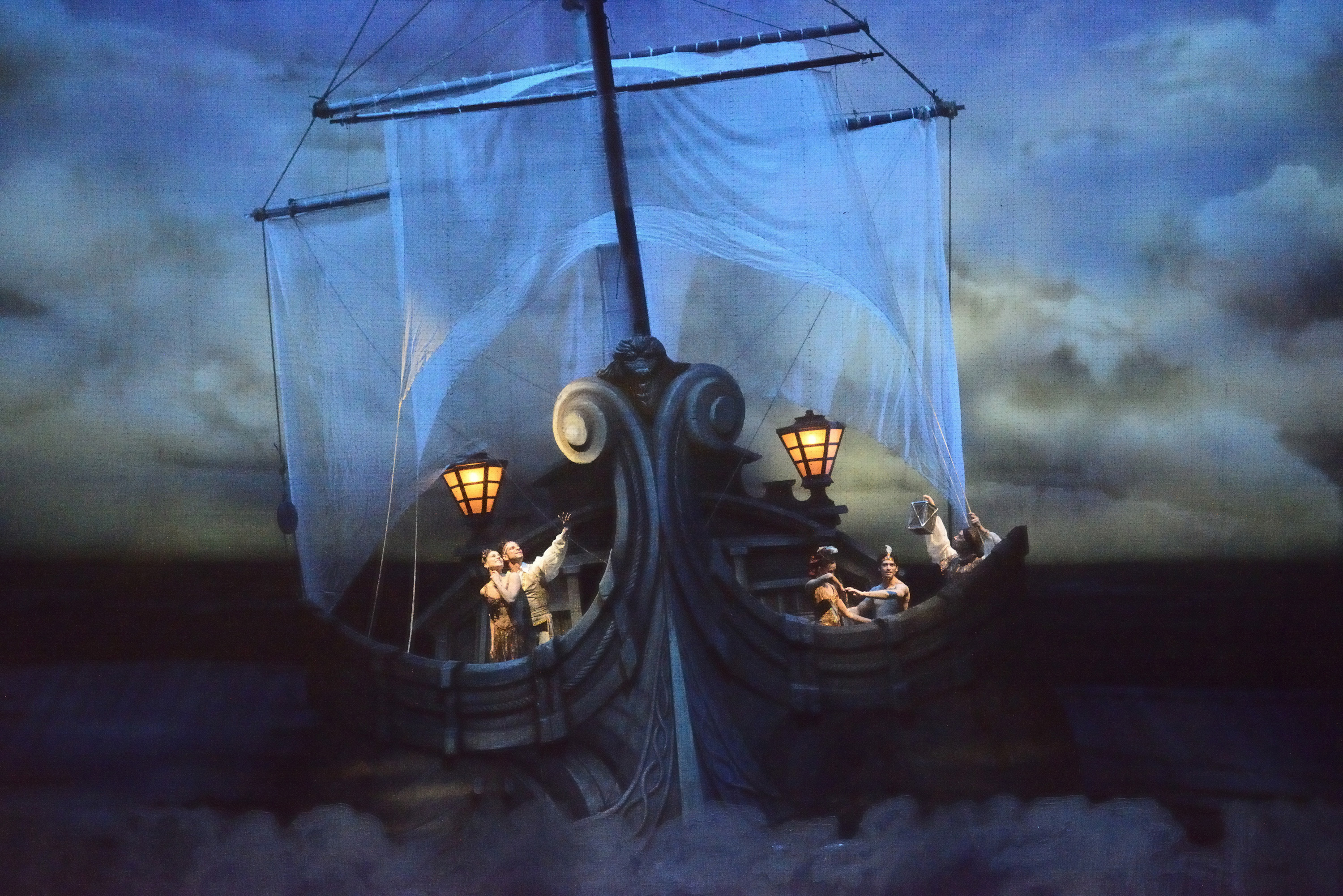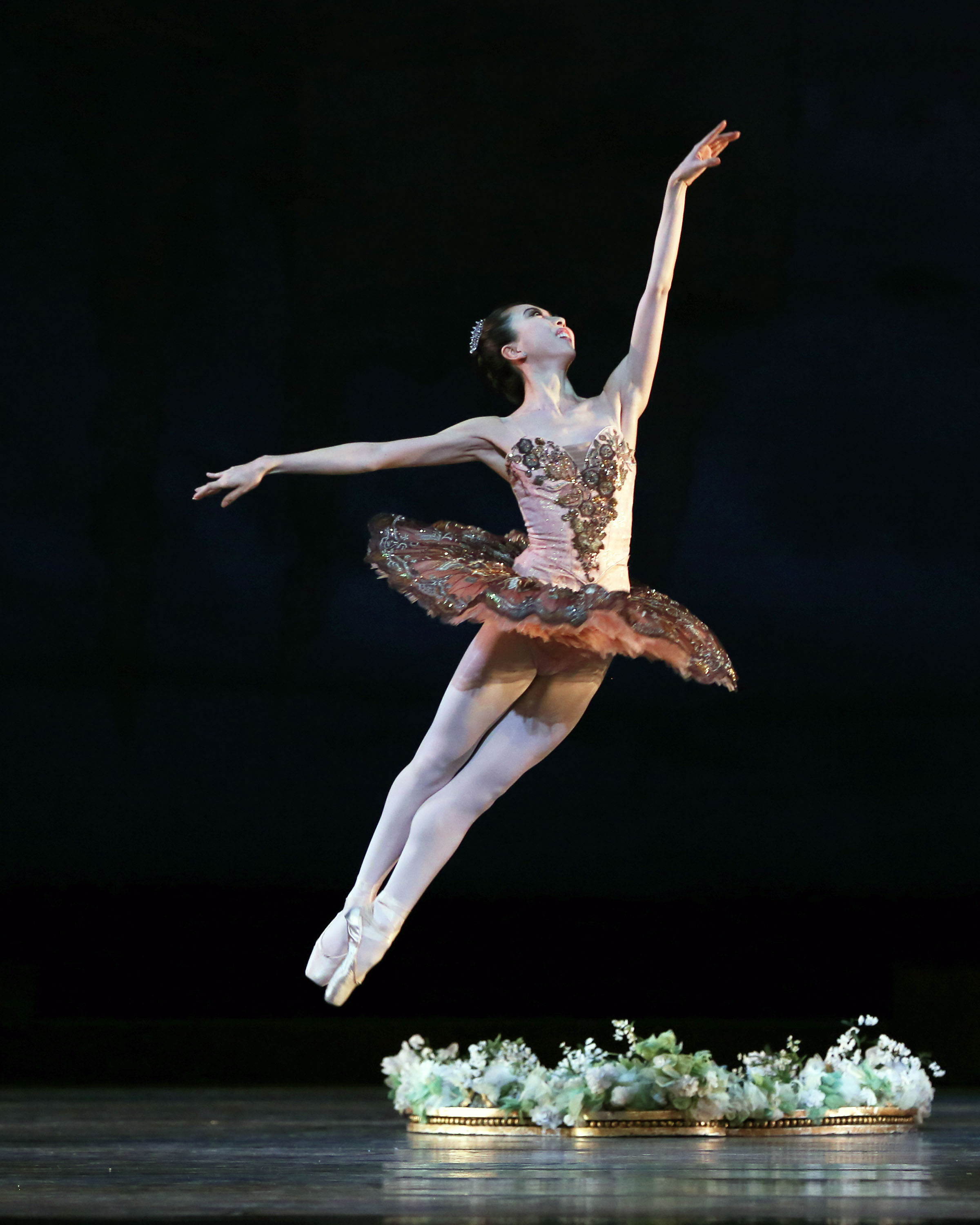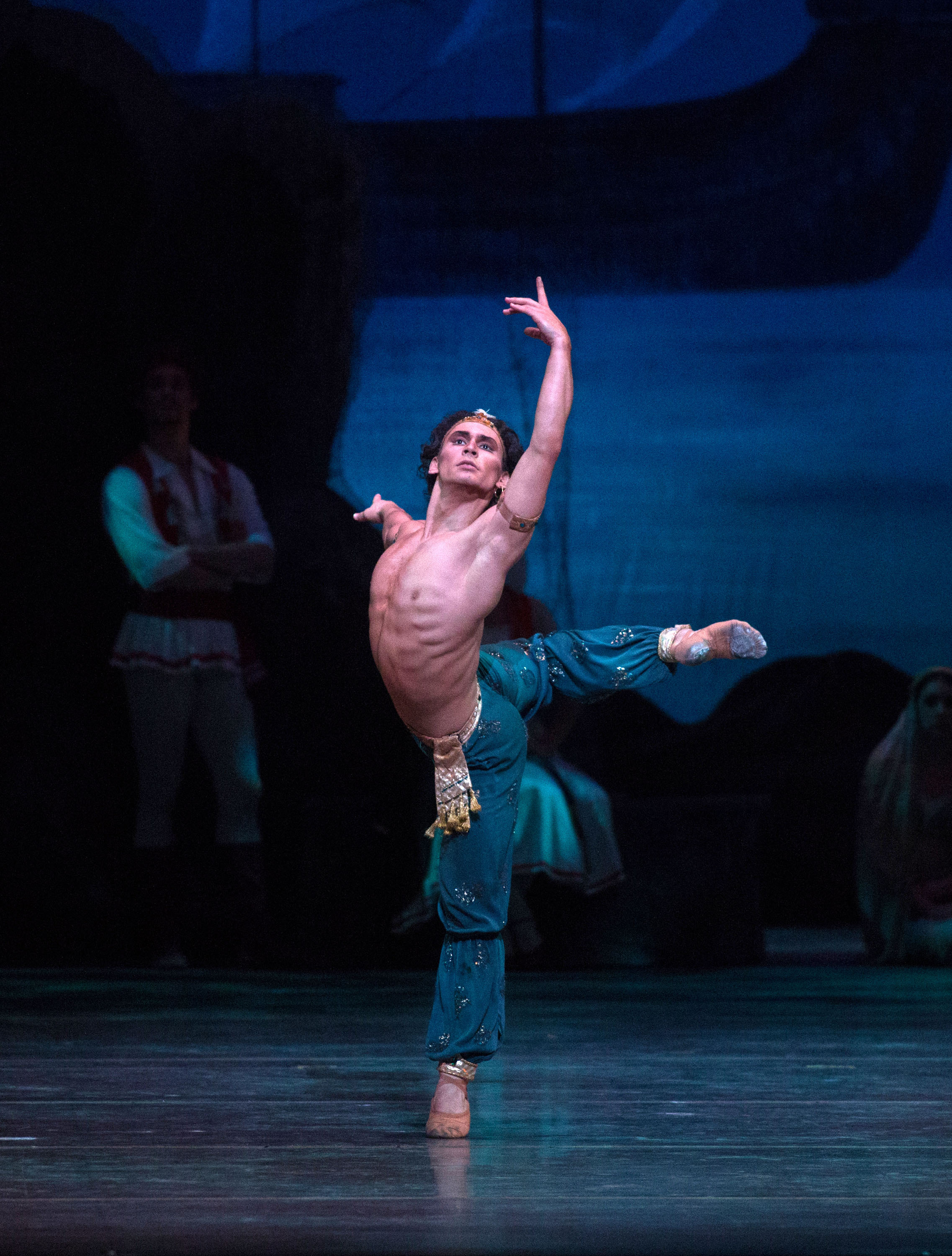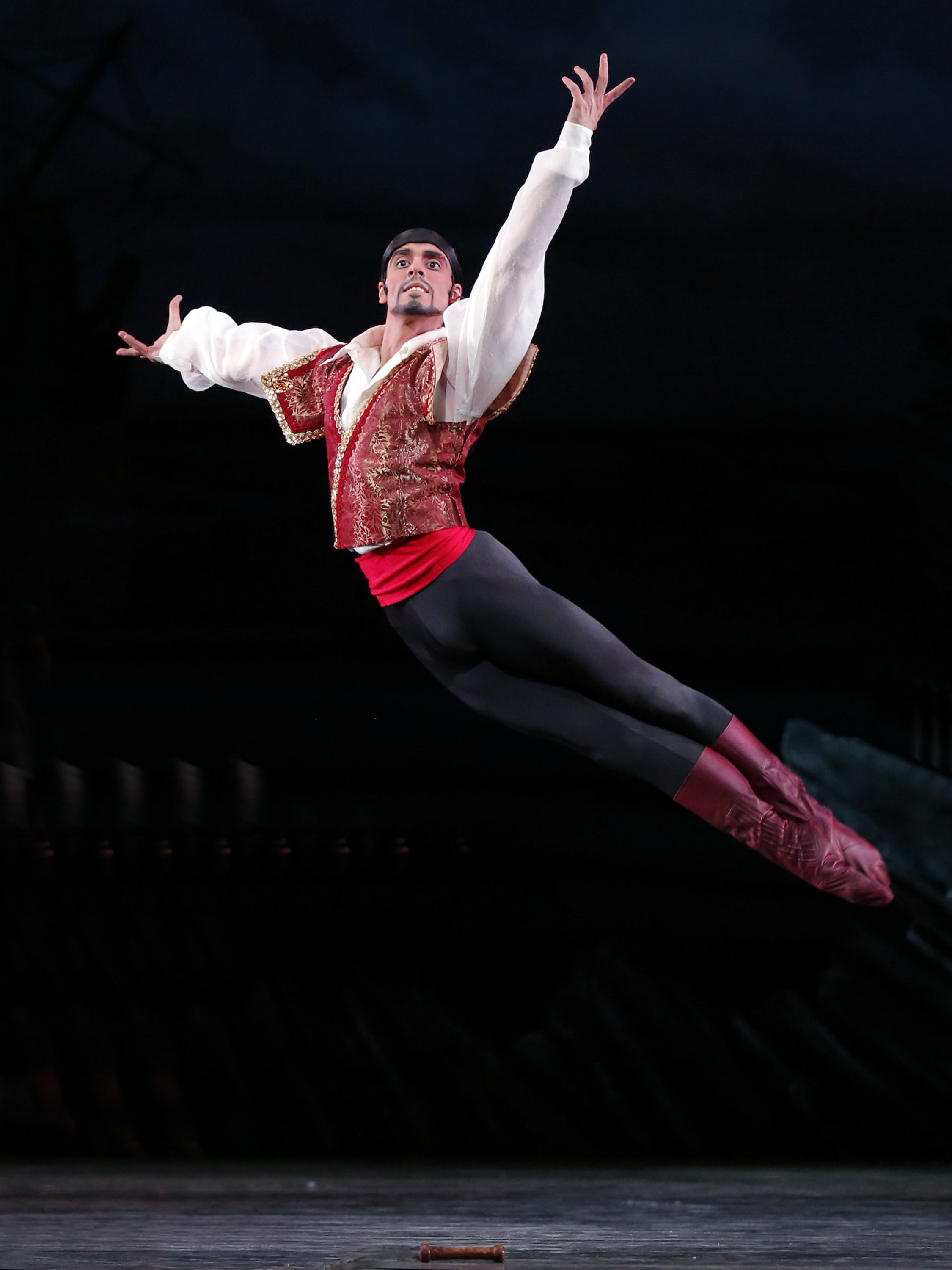American Ballet Theatre has lavished time and money on new sets and costumes for Le Corsaire. Which is rather like redecorating the staterooms on the Titanic.
Granted, it would take a sweeping overhaul of this storyline about pirates, slave girls and lascivious potentates in a Muslim kingdom to rid it of its more egregious racial, gender and cultural insensitivities. And it would have been no small feat to slash the trite fairground score -- a wearying mishmash of Adam, Pugni, Delibes, Drigo and Oldenbourg -- in order to tuck in more compelling music. Barring a complete face-lift, however, ABT should have deep-sixed the ballet and polished some other more deserving 19th century gem.
Not that political correctness in and of itself is a goal. Like other great art forms, ballet reflects the prejudices of its time and, in the hands of sensitive curators, becomes an intriguing window into history and into the psyche of its creators, not merely a vehicle to show off the virtuosity and dramatic abilities of today's performers. That said, choreographers today are forever messing with the classics, time-traveling them, gender-bending them, setting them in the wild wild West, tossing in some Philip Glass, tacking on happy/sad/ambiguous endings, sometimes with beguiling results. Sadly, ABT took no such risks with Le Corsaire.
In the current production the characters are mere cartoons, and the plot insults the audience's intelligence at every turn. The Act III subterfuge by which the pirate ship captain Conrad and his men infiltrate the Pasha's palace and rescue the trapped slave girls -- the rightful climax of the ballet -- is not only inane but executed with so little choreographic imagination that it looked like everyone on stage was simply marking the steps, as if in rehearsal. A critical interaction between Conrad and Ali in Act I -- to the extent that any interaction in this silly plot could be called critical -- was entirely lost on everyone in the audience except those in the nosebleed seats, as it took place behind a band of pirates making merry with their girlfriends.
Much of the choreography, by Anna-Marie Holmes, who nodded -- distantly, it would appear -- to Marius Petipa and Konstantin Sergeyev, is busy work, with a few genuinely romantic moments for the lead couple in the pirates' grotto, charming variations for the slave girl Gulnare and for the three slave girls known as the Odalisques and the infamous, trick-filled but entertaining Second Act pas de deux à trois for Conrad, the slave girl Medora and his personal Slave, Ali. The Jardin Animé dream scene in Act III, meant to be a pure classical diversion, is just a lot of walking around delivering floral arrangements -- except for Medora, who gets to show off her jumps (and these ABT ballerinas can jump).
While the costumes and sets are an improvement over the old, the bar was very, very low. In the old production the pirates were unaccountably attired in tennis skirts; now at least they've got manly-looking vests and cummerbunds. But they're sporting a lot of gold sparkly stuff and looking very clean... more like suburban pirates. Only Herman Cornejo in the role of Conrad adopted an appropriately scruffy, slightly dangerous look, the kind that would get him racially profiled in Swan Lake. The female slaves and Pasha's wives wear tutus or harem pants with spangly tops that bared midriffs, in all the colors of Baskin Robbins -- except in the Jardin Animé, in which an epidemic of bright pinkness was blessedly muted by lighting that bathed everything in a warm gold tint.
With material like this, seasoned dancers have to act up a storm to prevent the whole thing from degenerating into a circus. On Friday night, Xiomara Reyes persuaded us that she was a delicate, vulnerable slave girl whose love for Herman Cornejo sent her into ecstasies of pointework. Gillian Murphy in Saturday's matinee was a more intrepid, athletic slave girl, the kind whom you'd expect to be able to outrun any human trafficker -- a ballet ninja. (Marcelo Gomes, opposite her in the role of Conrad, needed only one hand to steady her in her multiple supported pirouettes, so sure was her balance and so keen are his partnering skills).
Jared Matthews as the trafficker Lankendem was far too light on his feet and too likeable to scare anyone on Saturday, whereas Daniil Simkin was positively sinister in the role on Friday. He opened with a series of multiple pirouettes (I stopped counting after nine) that slowed, then quickened, then slowed to end in developpé à la seconde, with the faintest hint of a mocking smile on his face.
Simkin danced the role of Conrad's Slave on Saturday, and the comparison with Ivan Vasiliev who danced the role on Friday was intriguing. Both very different dancers, flashy in their own ways, both known for their turns and jumps, they appear to steer clear of the same tricks when dancing the same role. Last year at the Met, Simkin's Slave was seemingly weightless, a bird in flight, whereas Vasiliev was a rampaging tiger, distorting his body lines in search of extra height in the air and extra pirouettes. This season, Simkin has found new gravity and power, while Vasiliev has developed a smoother execution and cleaned up his lines: could this be the Vasiliev effect on Simkin, and the Simkin effect on Vasiliev? Both manage somehow to convey a humility appropriate to the Slave even while technically out-dancing every other male dancer onstage and on the planet.
Cornejo and Gomes in the thankless role of Conrad dutifully spun their way through endless strings of double sauts de basque, made love to Medora and disciplined wayward pirates, all in swashbuckling pirate style.
Other stand-outs were the fiery Luis Ribagorda as the pirate traitor Birbanto on Saturday and Sarah Lane's luscious Gulnare on Friday. ABT always fields rock-solid Odalisques but the three on Friday were exceptional: Skylar Brandt, proud owner of a dynamite gargouillade; Misty Copeland, who stretches and twists her lines so eloquently; and Yuriko Kajiya, clean and unmannered in her execution and unflaggingly ebullient. Victor Barbee and Julio Bragado-Young's vast comedic talents deserve better than the clichéd role of the Pasha -- a stinking rich, fat, waddling libertine -- but they're pros and they play him like Shakespeare.
The orchestra on Friday under the baton of Charles Barker seemed to be defeated by the numbing score: tempi on the loose, trumpets on strike, a loss of power during the final storm scene. Ormsby Wilkins righted the orchestral ship in Saturday's matinee, though the brass still seemed to want to complain about something.
Alas, the future of this Corsaire seems bright, judging by the near sold-out houses and the hootin' and hollerin' from the audience. At one point during Gillian Murphy's Second Act variation, some overexcited viewers started clapping along in time to her dazzling, precise footwork. I felt like tossing them some hotdogs and calling out: hey, have you seen the new Ratmansky?





